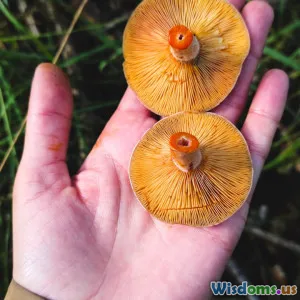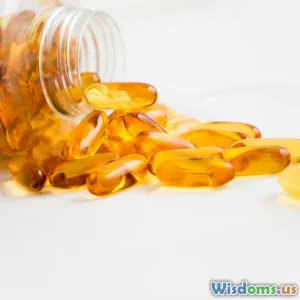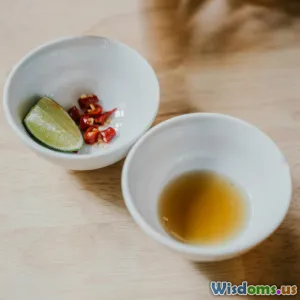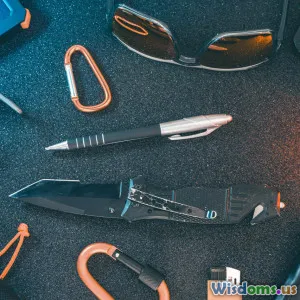
Foraging Safety: What You Need to Know
7 min read Essential guide to safe foraging—identify edible plants, avoid toxins, and protect yourself in the wild. (0 Reviews)
Foraging Safety: What You Need to Know
Foraging, the ancient art of gathering wild foods, has witnessed a resurgence among outdoor enthusiasts, survivalists, and foodies alike. Venturing into forests, meadows, and riverbanks to find wild edibles is not only rewarding but deeply connected to our heritage and natural environment. However, without proper knowledge and caution, foraging can quickly turn dangerous or even fatal.
This article unpacks vital safety guidelines every forager must know to harvest wild plants safely. Drawing on real-world examples, expert insights, and practical tips, you'll learn how to identify edible species, avoid toxic look-alikes, understand environmental hazards, and respect nature responsibly.
Understanding the Stakes: Why Foraging Safety Matters
While the idea of plucking wild berries or mushrooms sounds idyllic, the dark side involves risks such as consuming toxic plants, contaminants, or irritating substances. According to the Centers for Disease Control and Prevention (CDC), several cases of mushroom poisoning result annually from misidentification—some leading to severe liver damage or death.
History is rife with cautionary tales. For instance, famed botanist John Ramsbottom lost his wife after mistaking deadly Amanita phalloides, the "Death Cap" mushroom, for edible varieties. Even experienced foragers occasionally make mistakes, underscoring the necessity for rigorous safety practices.
Moreover, environmental contamination—like heavy metals in plants near industrial areas or pesticide residues—horns the need for foraging in clean, approved locations.
Identifying Edible Plants: Knowledge is Your First Shield
Learn the Basics of Plant Identification
Key to foraging safety is being able to distinguish edible plants from their harmful doppelgängers. Visual characteristics, smell, texture, habitat, and seasonality all factor into accurate identification. Educational guides and apps like "Seek" by iNaturalist complement traditional field guides and expert-led courses.
For instance, wild ramps (Allium tricoccum), a popular edible wild onion, can be safely harvested once correctly identified by its garlic-like smell, broad green leaves, and white bulb.
Beware Common Poisonous Look-Alikes
Some edible plants have deceptively similar toxic cousins. Take the morel mushroom: true morels (Morchella spp.) are edible and prized, but false morels (Gyromitra spp.) contain neurotoxins and can cause fatal poisoning if consumed.
The hemlock-queen anne’s lace confusion is another classic: wild carrot (Daucus carota) looks similar to poison hemlock (Conium maculatum), which contains deadly alkaloids. Confirmatory details—like the purplish spots on hemlock’s stem or the carrot’s carrot-like smell—can save lives.
Professionals advocate adopting the rule "When in doubt, leave it out."
Avoiding Environmental and External Hazards
Steer Clear of Polluted or Unsafe Areas
Plants absorb pollutants, heavy metals, and chemicals from their surroundings. Foragers near highways, industrial zones, or sprayed agricultural lands may unknowingly collect contaminated specimens.
For example, studies of urban foraging found wild greens near busy roads containing elevated lead levels, far exceeding safety thresholds. To minimize risk, forage away from human-made pollution sources and seek out pristine natural environments.
Recognize and Protect Against Wildlife and Insects
Certain foraging grounds are habitats for ticks carrying Lyme disease or venomous snakes. Wearing appropriate clothing, using insect repellents, and remaining vigilant helps avoid bites or stings.
Additionally, be mindful of protected species or areas where foraging is restricted to preserve biodiversity and comply with local regulations.
Preparation and Post-Harvesting Safety
Proper Cleaning and Cooking
Even edible wild plants can harbor microbes, parasites, or toxins that degrade with thorough cooking. For example, pokeweed (Phytolacca americana), once properly prepared (young leaves boiled repeatedly), is safe to eat after removing toxins.
Wash all foraged items meticulously to remove dirt, insects, and potential chemical residues.
Start Small: Your First Test
Try a small amount initially to test for allergies or sensitivities. Like with exotic foods, some individuals may react adversely to previously unencountered wild edibles.
Tools and Resources to Boost Foraging Safety
- Field Guides: "Edible Wild Plants" by USDA or "Peterson Field Guide to Edible Wild Plants" are trusted sources.
- Training Courses: Organizations like the North American Mycological Association provide workshops on mushroom identification.
- Mobile Apps: iNaturalist, PlantSnap, and Seek help with real-time identification but verify with multiple sources.
Expert Reflections: Insights from Seasoned Foragers
Mary W. Davis, a renowned ethnobotanist, wisely says, "The forest is generous, but it demands respect and knowledge in return. Your safety comes from patience and humility."
Real foragers emphasize cultivating a mindset of cautious curiosity paired with continuous learning to make foraging a safe, enriching experience.
Conclusion: Forage Smart, Stay Safe
Foraging for wild foods is a fascinating journey interlacing survival skills, adventure, and nature appreciation. However, the thrill must be tempered with responsibility and informed caution. Through thorough plant identification, awareness of environmental hazards, and methodical preparation, you can minimize risks and enjoy the wild bounty confidently and sustainably.
Your next foraging expedition can blend discovery and safety by respecting nature’s nuances, honoring expert knowledge, and always prioritizing your wellbeing.
Remember: the best harvest begins with the wisdom to know what not to pick—and when to walk away.
Happy and safe foraging!
Rate the Post
User Reviews
Popular Posts





















